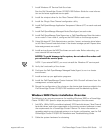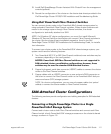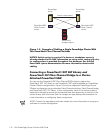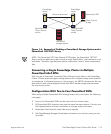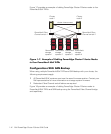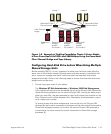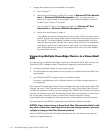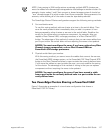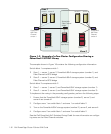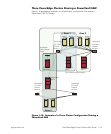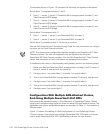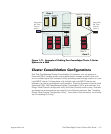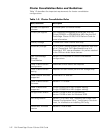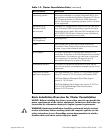
support.dell.com Dell PowerEdge Cluster F-Series SAN Guide 1-17
NOTE: Using zoning in SAN configurations containing multiple MSCS clusters pre-
vents the nodes from discovering a storage device that belongs to another cluster. For
example, cluster nodes 1 and 2 that connect to shared storage system A should not
“see” shared storage B to which nodes 3 and 4 are connected. Zoning prevents this
scenario, while allowing all of the nodes to see the tape backup devices.
The PowerEdge Cluster F-Series configurations support the following zoning methods:
•
Port worldwide name
To use this zoning method, add one cluster at a time to the switch fabric. Then
zone the newly added cluster immediately after you add it to prevent it from
being accessed by other clusters or servers in the switch fabric. Redefine the
zoning for the cluster after you replace a component; for example, after you
replace a Fibre Channel HBA, a storage processor, or a Fibre Channel SCSI
bridge. The advantage of this method of zoning is that you can move cables from
port to port within the switch fabric without requiring the zones to be updated.
NOTICE: You must reconfigure the zones if you have replaced any Fibre
Channel storage components, such as Fibre Channel HBAs or
PowerVault 65xF storage processors.
•
Physical switch fabric port number
With this zoning method, you cannot move the cables that connect the servers,
the PowerVault 650F storage system, or the PowerVault 35F Fibre Channel SCSI
bridge to the Fibre Channel switches to a port outside the currently defined zone.
If you move the cables to a port outside the zone, you must redefine the zoning
for the cluster. The advantage of this method of zoning is that you can replace
components without requiring the zones to be updated.
NOTICE: You must reconfigure the zones if you have moved a cable
from a port inside the currently defined zone to a port outside the cur-
rently defined zone.
Two PowerEdge Clusters Sharing a PowerVault SAN
Figure 1-9 provides an example of a two-cluster configuration that shares a
PowerVault 130T DLT library.



